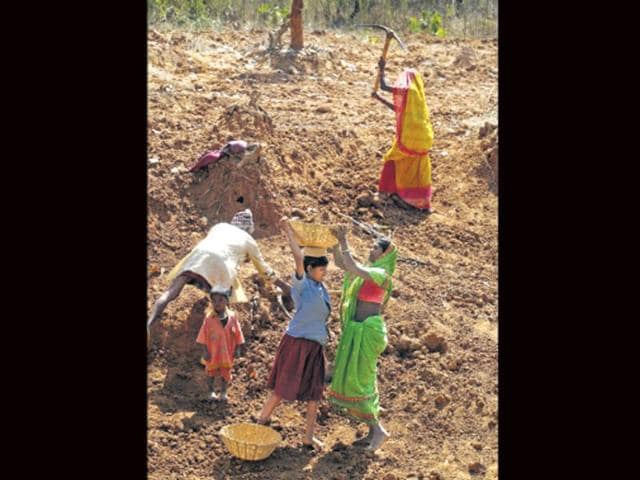MGNREGA’s the route to asset creation
It will not be a good idea to convert it into a cash transfer scheme as its design allows it to trigger inclusive economic growth.
Noted economist Arvind Panagariya has recommended conversion of the MGNREGA into a cash transfer programme. He wants “….redesign of social welfare programmes including…the MGNREGA with a focus towards direct cash transfer to rural households….” (Ease land rules, turn MGNREGA into cash transfer: Panagariya, February 13).

There are several issues in the implementation of this Act. So, any change, however radical should be welcomed if it is going to improve the welfare of the poorest of the poor in the society. We already have many welfare schemes that transfer cash to the intended beneficiaries. Janani Suraksha Yojana for the pregnant women; scholarships, pensions are some of such cash transfer schemes. But it is impossible to even imagine the conversion of the MGNREGA into a cash transfer scheme like the ones mentioned.
The design of MGNREGA is distinct. It has the twin objective of wage employment and production of durable assets. And both these objectives have a target built into the design. Households in villages who do not have any other opportunity of earning opt to work on the MGNREGA projects. Only those who ‘demand’ work are supposed to get work. They are not paid daily wages but are paid as per the volume of work output. So unlike other welfare schemes, the beneficiary is not targeted beforehand. The beneficiaries keep changing over period and over years. So which rural household will get the cash transfer?
The other objective of the MGNREGA is that of asset building. There are islands of development across and within our states. A closer look shows that availability of rural infrastructure is the underlying explanation for these developed regions. Rural infrastructure that supports rain-fed farming requires continuous resource allocation for productivity gains.
The present process of resource allocation has led to highly unequal rural development, being subjected to political lobbying. Because the MGNREGA is demand driven, typically, the rain-fed regions, regions with low industrial activity, regions away from urban centres are found to be on the map of the MGNREGA demand. This ensures that regions which lack basic infrastructure get it built because the poor influence the allocation with their demand for work.
In spite of this built-in distinctive edge, the programme has more than its due share of criticism. Panagariya also says that the “…MGNREGA scheme …has failed to create public assets despite spending thousands of crores of rupees on it every year”.
Productivity of dry-land agriculture is intrinsically linked with watershed development. The MGNREGA is the most suitable vehicle for creation of soil and water conservation structures since it is labour intensive. Also, most of the material consumed is locally available and to ensure effectiveness it is desirable that labour from the same area is involved in building it since they understand the local conditions well.
The kaccha roads may not be visibly impressive but imagine the counterfactual and we will understand their immense value for growth and welfare. How often have we seen such works being given significance in the central, state or even district budgets? The MGNREGA makes it possible.
The MGNREGA’s potential to unleash productive forces through asset creation is often missed. This is primarily because such assets do not fit into the standard images associated with urban infrastructure. The community assets created by the MGNREGA are not glittering like flyovers, bridges and multi-lane tarred roads. But they are not less important. In fact their potential to trigger inclusive economic growth is often far more effective.
Ashwini Kulkarni is director, Pragati Abhiyan
The views expressed by the author are personal





